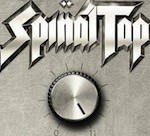 I was going to write a lengthy piece to promote the importance of of both Telephony API’s and the reinforce the growing trends toward both cloud computing, Web-oriented architectures, VoIP and community-building, but Alex Williams at Read-Write Enterprise did a great job of it here, as a sequel to this. That’s why I’d like to launch another theme in support of Recombinant Communications by talking about a concept that should be left behind – if it hasn’t been totally abandoned already. That is the “ideal” of “Five 9’s”.
I was going to write a lengthy piece to promote the importance of of both Telephony API’s and the reinforce the growing trends toward both cloud computing, Web-oriented architectures, VoIP and community-building, but Alex Williams at Read-Write Enterprise did a great job of it here, as a sequel to this. That’s why I’d like to launch another theme in support of Recombinant Communications by talking about a concept that should be left behind – if it hasn’t been totally abandoned already. That is the “ideal” of “Five 9’s”.
For those of you too caught up in the world of “six sigmas” to remember Five 9’s, here’s a refresher. It is the bugaboo of every equipment vendor or service trying to win business built on “telco-grade” service level agreements “SLA’s”. In the bad old days, when all computers and switching systems had to go into those windowless “lights out” central office buildings, prospective purchasers (meaning incumbent carriers) added a little something called “NEBS-compliance” to the mix. Here’s a link to the 30-page “quality assurance” document still in use by Verizon to support “NEBS testing”. You literally have to set your product on fire and drop it out of a building to provide data on its heat dissipation, fire resistance and seismic tolerances. [It’s telling that while the document has a glossary of abbreviations and acronyms covering things like CO, FTTP and the like. NEBS is never defined. FYI: it is an old Bellcore term for “Network equipment-building system” specifications.]
NEBS is an artifact of the monolithic communications industry. It was a time when the dominant, incumbent carriers had total control over the pace of innovation and introduction of new services. NEBS testing (and testing in general) often extended the time it takes to deploy new services by a factor of ten. High levels of reliability and availability took precedent over rapid and responsive introduction of new services and applications. The notion of Five 9’s comes out of this same school of thought. It refers to the number of significant digits in the measure of computer system and network uptime. Five 9’s is 99.999% availability. In any given year (which equates to 525,600 minutes) Five 9’s equates to a little more than 5 minutes).
Think of that the next time Facebook freezes, Gmail is unavailable, or the “Fail Whale” appears as you try to take a Tweet break. Heck, think of it as you make sense of a slightly mangled transcription of a recently received voicemail message. My point is not to defend such failures, but to point out that we end-users (well, at least my “sample of one”) would rather live with these minor mishaps than do without new services altogether. The speed at which new applications and services are introduced and how they evolve over-the-top of IP-based networks is both dazzling and beneficial to end users.
Today’s world of telco mashups and telephony API’s is built on “Four 9’s” at best and, in the case of speech-to-text transcription, something on the order of 85% recognition rates (with human intervention as a frequent fallback). On smartphones, mobile apps fail routinely. People are accustomed to dropped calls and the occasional need to “reboot” their mobile devices. In spite of such shortcomings, or perhaps because of them, mobile subscribers feel more attached to their devices than ever before. Going mobile has a more daring, game-like quality to it because of a certain amount of risk-taking and improvisation.
As we enter the second decade of the new millennium, mobile mashups are more popular than ever and the world is on the threshold of high adoption rates for voice command, voice search and message dictation. The fun is just beginning. And, in no small way, we owe it all to the End of Five 9’s.
Categories: Articles

 NiCE Interactions 2025: Agentic AI, Better Data, and a Whole Lot of Partnership
NiCE Interactions 2025: Agentic AI, Better Data, and a Whole Lot of Partnership  Getting It Right: What AI Agents Actually Mean for Customer Support (Webinar)
Getting It Right: What AI Agents Actually Mean for Customer Support (Webinar)  Beyond the Basics: How AI Is Transforming B2B Sales at TP
Beyond the Basics: How AI Is Transforming B2B Sales at TP  Five9 Launches Agentic CX: Toward AI Agents That Reason and Act
Five9 Launches Agentic CX: Toward AI Agents That Reason and Act